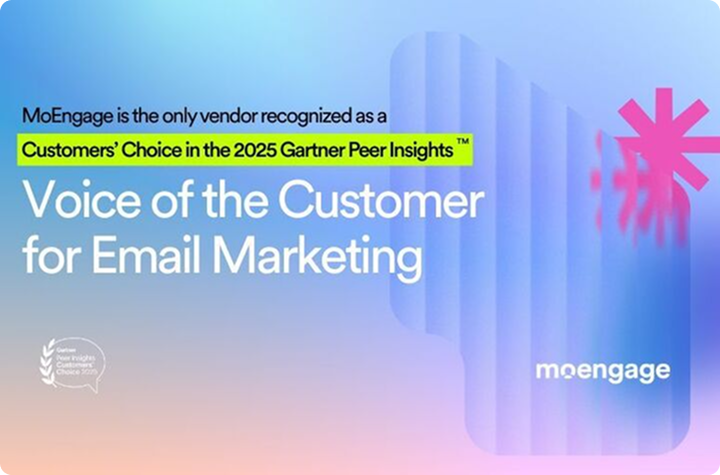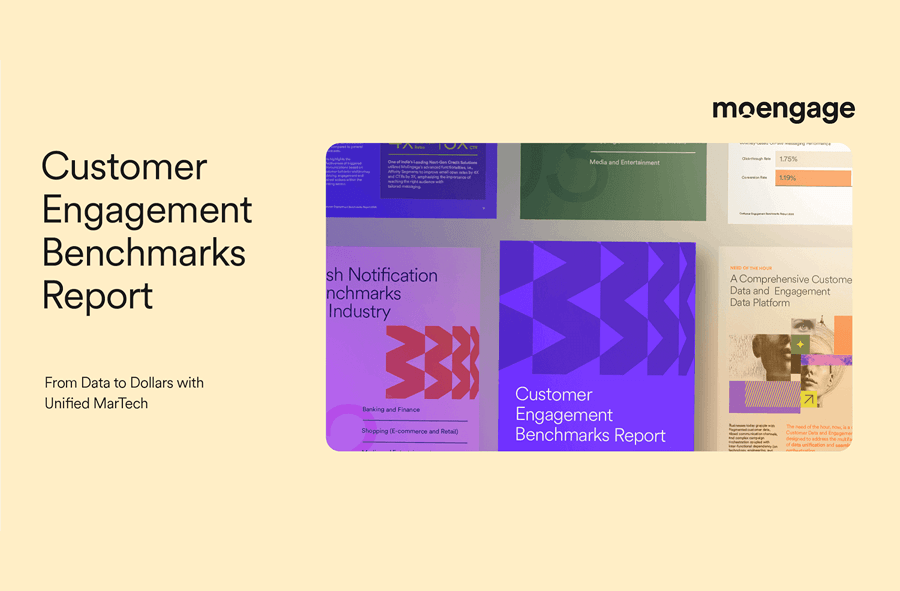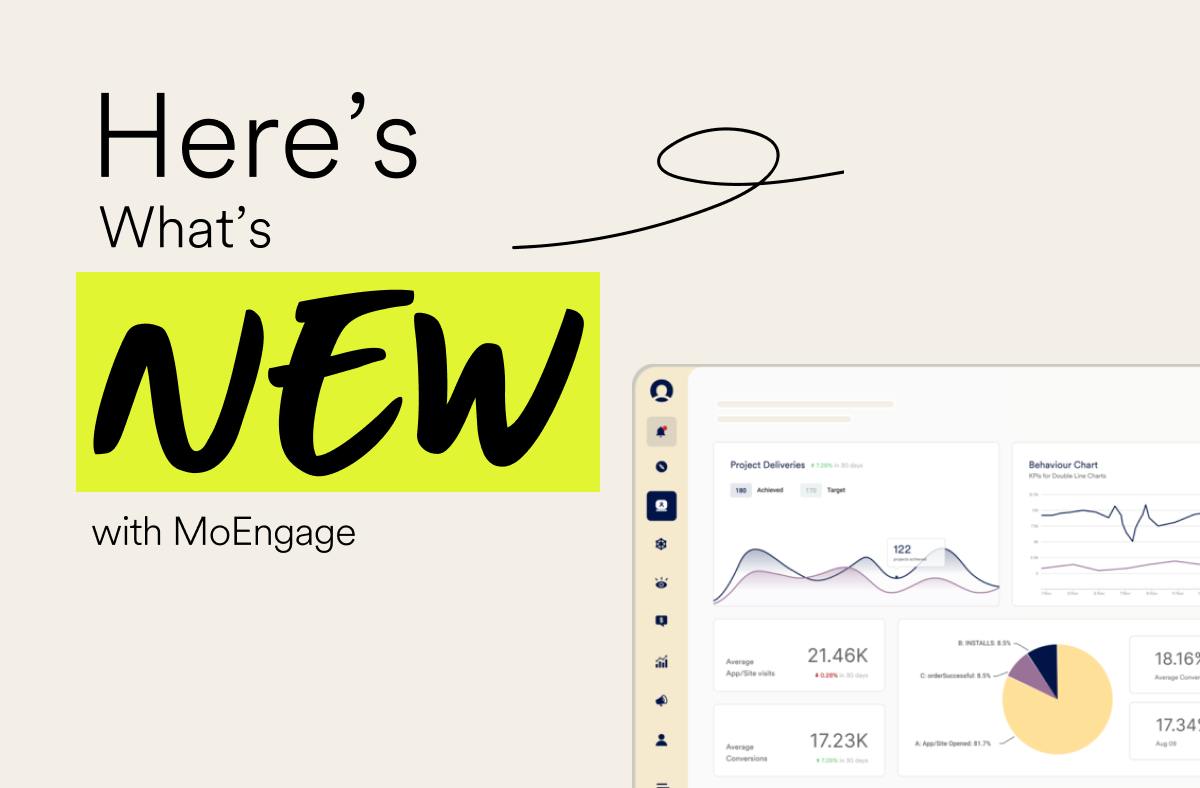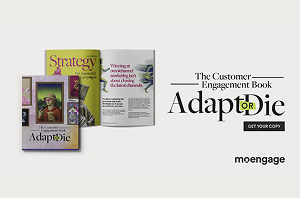6 Best Transactional Email Platforms to Send Emails On Time
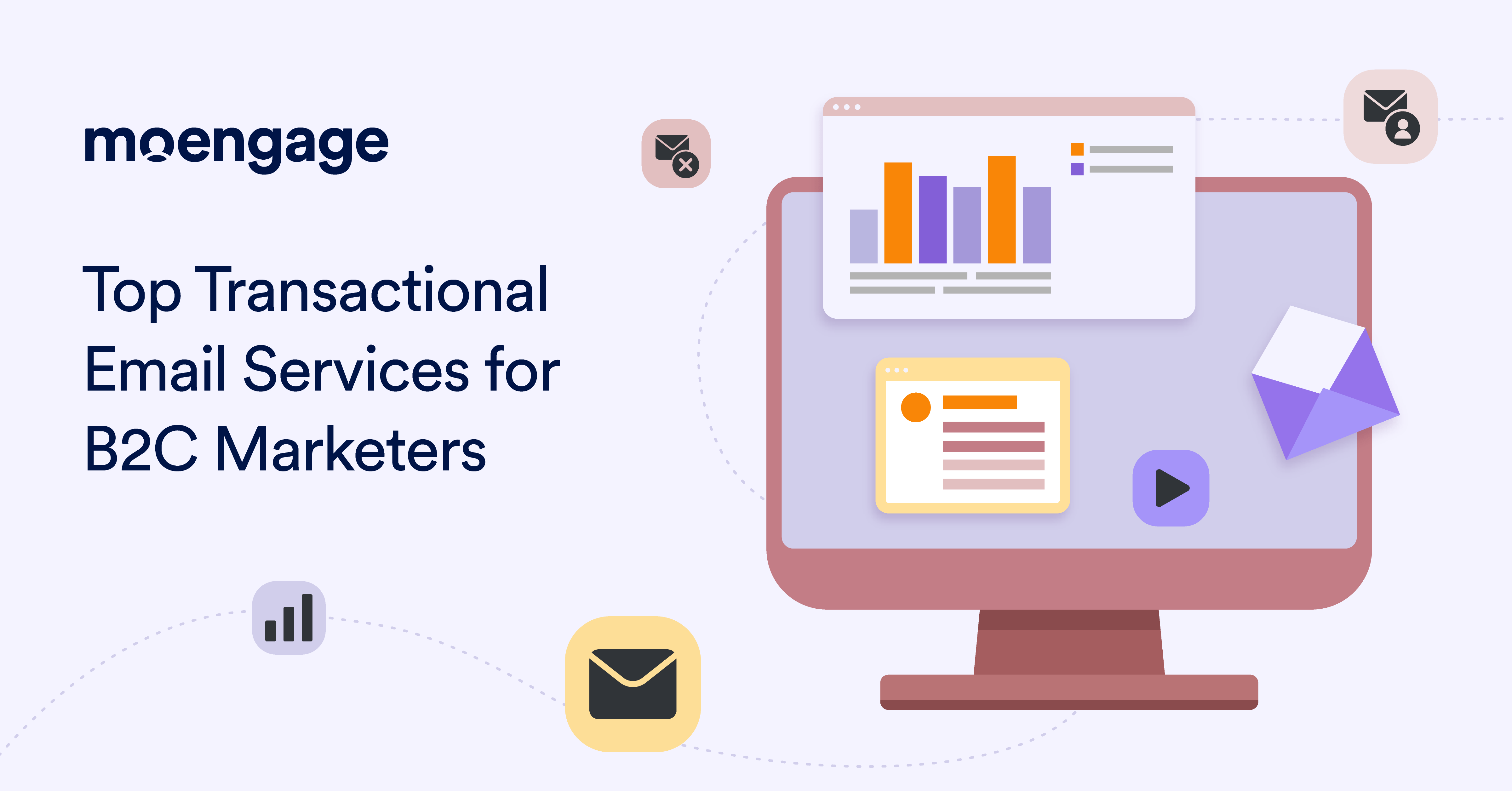
Reading Time: 12 minutes
Can you solve a Rubik’s cube blindfolded (believe it or not, some people can)? No? Ever get the same feeling while sending transactional emails? Yeah?
Time to switch your transactional email platform, then.
The right platform makes sending transactional emails a smooth, automated process that ensures your customers always get what they need, when they need it.
Let’s break it down from the ground up: what a transactional email service actually does, and how these platforms work behind the scenes to make your life (and your customers’) easier.
What is a Transactional Email Service?
A transactional email service is a platform that automates the sending of essential, real-time emails triggered by specific customer actions, such as order confirmations, password resets, or account activity alerts. These services ensure reliable delivery and personalization for critical customer communications.
Instead of letting you manually send billing notifications or worry about whether a customer received their password reset link, transactional email services take over the entire process. They connect directly with your systems (such as your Ecommerce store, app, or CRM), automatically triggering messages the moment they’re needed.
How Transaction Email Platforms Work
Transactional email platforms operate as a bridge between your brand’s backend systems and your customers’ inboxes. Your application (e.g., your Ecommerce store or mobile app) generates a signal whenever a customer performs an action. The platform then grabs that signal, packages it up into a polished, perfectly-timed email, and delivers it straight to the customer’s inbox.
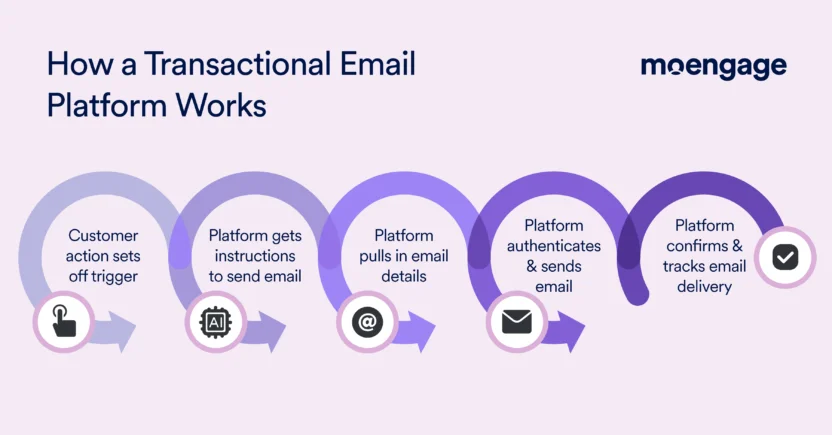
Let’s explore how they actually work, in even greater detail:
- Trigger Initiation: Every transactional email starts with a customer action, like logging in, making a purchase, or requesting a password reset. This action sends a signal to your system that an email needs to be sent.
- API or SMTP Relay: That signal gets passed to the transactional email service through an Application Programming Interface (API) or Simple Mail Transfer Protocol (SMTP). Both are fancy ways of saying that the email platform receives detailed instructions for creating and sending the message.
- Email Creation: The platform pulls together all the necessary details, like recipient address, personalized content (like the recipient’s name or order info), and your predesigned email template, to ensure every transactional email feels tailored and relevant.
- Email Authentication and Sending: Before sending, the transactional email platform authenticates your email using email authentication protocols like Sender Policy Framework (SPF), DomainKeys Identified Mail (DKIM), and Domain-based Message Authentication, Reporting & Conformance (DMARC), to ensure they’re trusted by recipient servers. Then, off it goes to your customer’s inbox.
- Delivery Confirmation and Tracking: After sending the transactional email, the platform monitors whether the email is delivered, opened, or clicked, allowing you to keep tabs on how well your transactional emails are performing.
There you go — transactional emails, all set and sent in a matter of seconds.
6 Types of Transactional Emails: Top Use Cases
While transactional emails may not have the flashy headlines of promotional emails, they serve a far more critical role: providing your customers with essential, real-time information exactly when they need it.
Here are six types of transactional emails and where they can fit into your email marketing strategy.
- Registration Email: These are the emails customers receive after creating an account or signing up for your service, to confirm the account creation. They sometimes include a verification link, which helps in preventing spam or fake accounts. Plus, quick, reliable registration emails pave the way for better onboarding, on toward long-term customer retention.
- Order Confirmations: This is what Ecommerce customers care about most post-purchase: “Did my order go through?” “What exactly did I buy?” “Is it shipping soon?” Order confirmation emails answer these questions instantly, giving recipients peace of mind that everything is moving in the right direction.
- Abandoned Cart Reminders: Abandoned cart emails are triggered when a customer adds items to their cart but doesn’t complete the checkout process. Transactional emails are perfect for this use case because they gently nudge hesitant customers back to their carts and generate revenue you might otherwise lose.
- Billing Notifications: Whether it’s a subscription renewal, an invoice, or a payment confirmation, billing notifications keep your customers informed about their transactions. These emails ensure customers are always in the loop about their financial activity tied to your brand. Strategically, these notifications help your brand maintain transparency, which is vital for building customer trust.
- System Alerts: System alerts are security-focused transactional emails that are meant to protect customers’ accounts. If something changes in a customer’s account (a password reset, login from an unrecognized location, or an updated privacy policy), it’s your job to proactively alert them.
4 Benefits of Using a Transactional Email Service to Automate Processes
Using a transactional email service transforms how your brand operates and interacts with your customers. Here are four core benefits that highlight why automating transactional emails using a platform is a must:
- Improved Customer Satisfaction: Using a dedicated transactional email service helps you deliver the kind of flawless, timely communication that keeps customers happy. When customers see that your brand consistently meets their expectations (and inbox notifications), they’re far more likely to trust you and stick around for future purchases or interactions.
- Less Room for Error: We know you don’t want to hear it, but human error is inevitable when things are done manually. Forgetting to send a key email, inputting the wrong email address, or even mismatched content can create friction between your brand and your customers, especially when you’re juggling multiple processes at scale. A good transactional email service ensures emails are sent with perfect consistency, accuracy, and adherence to customer preferences.
- Email Performance Analysis: Without a transactional email service, it’s nearly impossible to measure how your emails are performing. Did the registration email actually reach the customer? Did they click through to verify their account? Are there delivery issues you haven’t even spotted yet? By identifying what’s working (and what’s not), you get insights to help you optimize your email marketing strategy.
- Greater Brand Credibility: By automating processes through a transactional email service, you’re ensuring every customer interaction aligns with your brand. Whether it’s your tone of voice, visual identity, or the speed of delivery, consistency creates an impression of brand credibility that builds over time.
Now that you’re sold on why you need a transactional email platform, all that’s left is to find the right one for your brand.
But how do you go about it?
How to Choose a Transactional Email Platform for Your Team
If only choosing the right transactional email platform were like picking out a snack from a vending machine!
Whether you have a small team just starting out or managing millions of monthly emails, these considerations will help you narrow down the best platform for your needs.
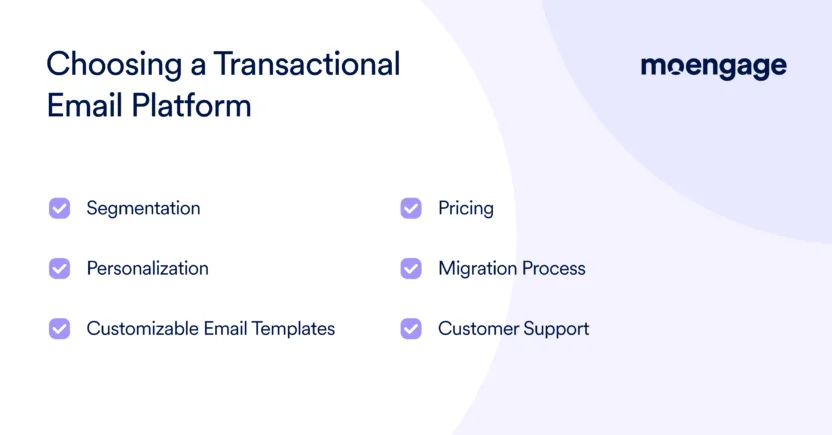
Let’s dig in.
- Segmentation: A transactional email platform with advanced Recency, Frequency, and Monetary (RFM) segmentation capabilities lets you target the right audience with the right message. For instance, a confirmation email sent to a returning customer might include loyalty rewards details, while a first-time buyer might get onboarding tips.
- Personalization: Your transactional email platform should allow you to dynamically pull in mobile and website personalization elements like customer names, product details, or order specifics. Bonus points if it offers dynamic fields, so emails can automatically include relevant, personalized content.
- Customizable Email Templates: How easy is it to customize templates for different types of transactional emails? Does the platform offer a drag-and-drop builder, or will you need code-heavy adjustments for every tweak? (Hint: the former is the better option).
- Pricing: Ah, pricing. The thing everyone talks about in whispers after the demo. Is the pricing straightforward, or are there unexpected charges for things like increased usage or advanced features?
- Migration Process: The best transactional email solutions make migration fast (within 3-4 months) and painless, with clear documentation and, ideally, hands-on support. You shouldn’t lose historical data, templates, or important customer insights during the process.
- Customer Support: When your transactional email service hits a road bump, you’ll want a human support team that actually responds to your ticket before midnight next Tuesday. If it feels like you’re going through an endless ticket loop, maybe it wasn’t meant to be between you two.
Ultimately, you need to find a tool that fits your team’s workflow, budget, and flexibility. After all, when you send transactional emails smoothly, you’ve got the platform’s features to thank for.
Wait, what features?
7 Key Transactional Email Platform Features to Evaluate
Transactional emails are the stuff customers actually want to receive. That’s why choosing the right transactional email platform is a critical mission.
But it’s not Mission Impossible. Because we’re listing seven features below.
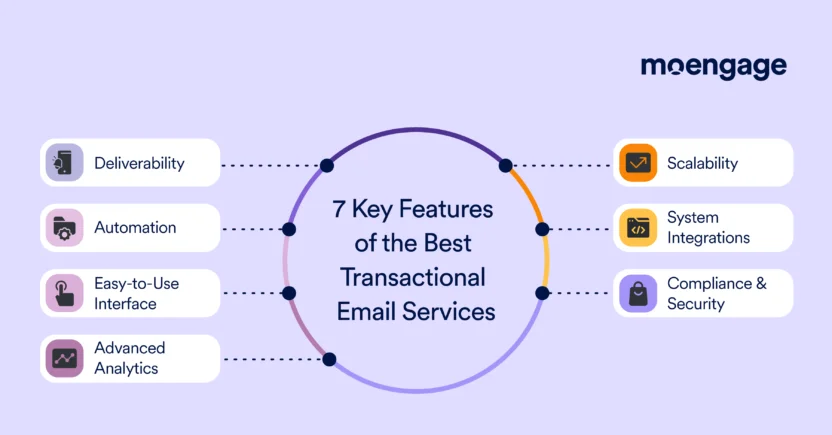
These features separate the winners from the ones that’ll leave you wondering where it all went wrong.
1. Email Deliverability
It doesn’t matter how slick your email design is, how clever your subject line reads, or how quickly your email was triggered. If it’s flagged as spam or doesn’t even show up, game’s over.
That’s why the best platforms take email deliverability seriously. Look for transactional email services that prioritize sender authentication protocols like SPF, DKIM, and DMARC. Bonus points if the platform boasts high deliverability rates in its marketing materials. Because without reliability, nothing else on this list will save you, and that’s a fact.
2. Transactional Email Marketing Automation
Manually sending out every “Your order is confirmed” email for an Ecommerce store is so 2005. That’s exactly why marketing automation is crucial for any transactional email platform worth its salt today.
The best email marketing automation software tools let you automate triggers based on specific customer actions, without you having to babysit the process. Whether it’s a password reset request or a payment failure notification, automation ensures the right message goes out to the right person at the right time.
It’s not just about saving time, you know. It’s about delivering a seamless experience where your customers never have to wonder, “Did my order actually go through?”
3. Easy-to-Use Interface
If you need a PhD in Computer Science to figure out how to send a basic transactional email, your platform has already failed.
User-friendliness is non-negotiable. The less time your team spends wrestling with clunky interfaces or deciphering unnecessary jargon, the more time they can spend fine-tuning emails that actually connect with your audience.
Look for a transactional email platform with intuitive dashboards and drag-and-drop email builders. If non-technical users on your team can set up and send fully-functional transactional emails without needing an IT intervention, you’re all set (high-five)!
4. Advanced Analytics
Transactional emails are packed with actionable insights, but only if your platform offers advanced analytics to uncover them.
Email marketing metrics like open rates, click-through rates, and bounce rates are just scratching the surface. The best transactional email services offer deeper insights, like geo-location data and device engagement, letting you optimize for how, when, and where your customers interact with your transactional emails.
5. Transactional Email Platform Scalability
Confession time: what works for a brand with 500 monthly email sends, might collapse under the weight of 500,000 sends. If your transactional email platform can’t scale alongside your business, that’s a red flag right there.
Scalable email platforms stay fast, reliable, and efficient, whether you’ve got 1K customers or 10 million. Sure, you might not need enterprise-grade volume right now, but if growth is the goal, why settle for a platform that can’t keep up with your brand six months from now?
6. System Integrations
The best transactional email platforms think of only two words when they meet your systems: ‘seamless integration’. Whether syncing orders from Shopify, pulling customer data from Salesforce, or tracking abandoned cart triggers through your email analytics tool, integrations make your email workflows smarter and faster.
And let’s not ignore the fact that a unified tech stack also means fewer compliance risks. Speaking of compliance…
7. Email Compliance and Security
What good is a transactional email platform if it doesn’t keep your messages compliant and your data secure?
Email compliance is a legal requirement now. Whether you’re sending transactional emails in the US (enter CAN-SPAM and the California Consumer Privacy Act or CCPA) or Europe (holler at the General Data Protection Regulation or GDPR), your platform needs to check the security and compliance boxes every single time.
This means built-in encryption (Transport Layer Security or TLS for emails in transit, please), support for authentication protocols (SPF, DKIM, and DMARC yet again), and tools to manage consent-based communication. No one wants their “Your new password” email intercepted by bad actors, damaging not just your brand’s reputation, but your customer relationships as well.
6 Best Transactional Email Services to Automate Your Process
There are dozens of transactional email services designed to handle everything from order confirmations to system alerts. But when it comes to choosing the right one, you hit a wall. Not all of them are as user-friendly or robust as you’d hope.
To save you from trial-and-error headaches, here are the top transactional email services to power your messages.
1. MoEngage
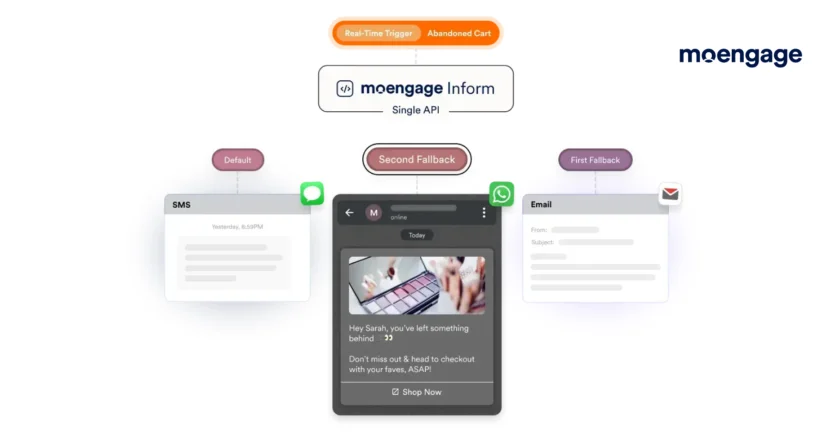
MoEngage Inform is an all-in-one customer engagement tool that takes transactional emails beyond the basics, turning them into personalized moments that delight customers.
With a focus on automation and audience segmentation, MoEngage ensures every transactional email aligns with your brand’s voice while being tailored to your customers’ behavior. Whether it’s crafting sleek, dynamic email templates or triggering precise workflows, this platform excels at combining reliability with personalization.
That’s how MoEngage Inform helped Loblaws onboard transactional messaging in 12 weeks and achieve an instant send time of under 3 seconds for such messages. And Payactiv used MoEngage Inform to send 100K promotional and transactional emails a day, leading to 9x more conversions.
How Pricing Works: MoEngage offers custom pricing plans depending on your team’s email volumes and engagement requirements. Pricing is available upon request.
Best For: Ecommerce, B2C SaaS, and brands looking to blend robust automation with deep personalization.
2. SendGrid
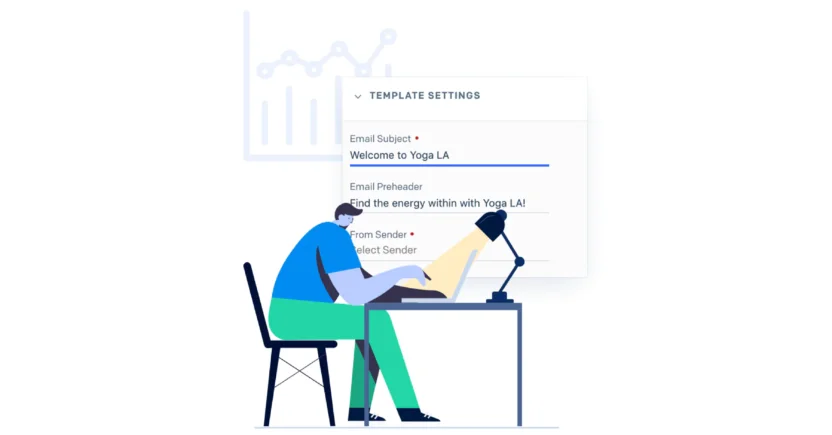
SendGrid is a popular, developer-friendly platform known for its powerful APIs and robust deliverability. It’s great for sending high volumes of transactional emails, and with tools for email validation and scalable campaigns, it’s a trusted choice for many tech-first teams.
However, SendGrid’s strength is also its weakness: it’s heavily geared toward developers, which can make non-technical users feel like a dunce.
How Pricing Works: Starts with a free plan for up to 100 emails a day, with paid plans beginning at $19.95/month for sending 50K to 100K emails per month.
Best For: Highly technical teams or developers managing complex, high-volume email programs.
3. Postmark
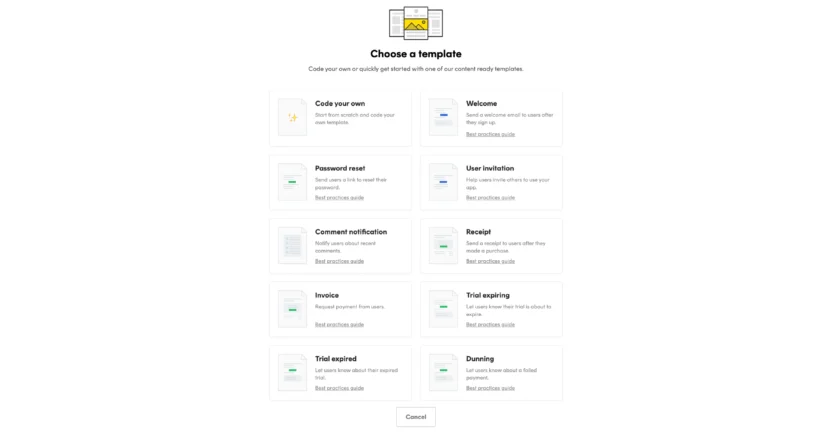
Postmark is a transactional email tool that focuses on one thing, and one thing only: speed. Every email sent through Postmark is automatically prioritized for deliverability, making it an excellent option for time-sensitive notifications like password resets and sign-up verifications. Its straightforward interface and developer-friendly features make it easy to get up and running.
That said, Postmark lacks the flexibility that cross-channel marketing platforms provide for advanced use cases or additional channels like SMS, WhatsApp, and in-app messaging.
How Pricing Works: Pricing starts at $15/month for 10K emails, with additional tiers based on email volume.
Best For: Startups and brands prioritizing speed and reliability for time-sensitive messages.
4. Mailgun
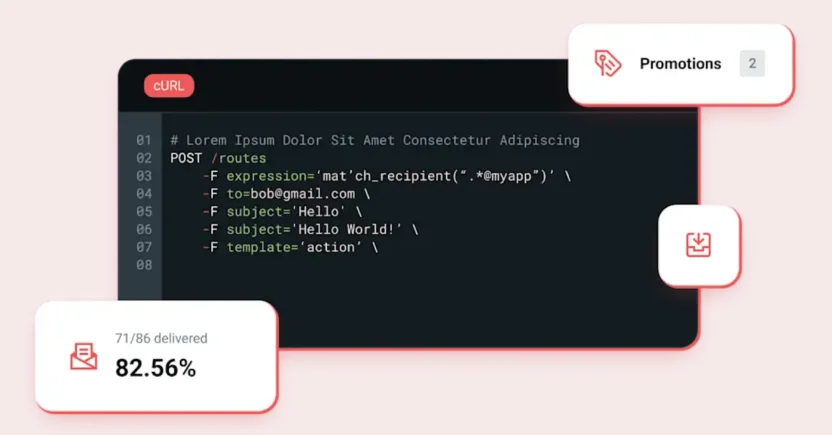
Like SendGrid, Mailgun is a transactional email service designed with developers in mind. It’s highly scalable, making it a great choice if you’re managing massive email volumes across markets. The platform’s real strength lies in its email testing API, which lets you fine-tune messages for optimal deliverability before they’re sent.
However, Mailgun can feel overly technical for teams lacking coding expertise or those without a full-stack developer on hand. Customizing your emails may involve more backend work than expected.
How Pricing Works: Its pay-as-you-go model starts at $35/month for 50K emails. Additional costs apply for higher usage and features like validation.
Best For: Developers managing high-volume, multi-region transactional emails.
5. Amazon Simple Email Service (Amazon SES)
Amazon SES is an ultra-scalable, budget-friendly transactional email platform that integrates seamlessly with AWS infrastructure. It’s one of the most cost-effective ways to send massive amounts of emails, making it ideal for enterprises with millions of global users.
Here’s the catch, though: simplicity isn’t SES’s strong suit. The platform is clearly designed for developers who don’t mind the brunt of configuration work. To the average marketer, it might look less like a software solution and more like a science project.
How Pricing Works: Pricing depends on volume, starting at $0.10 per 1K emails sent, with additional costs for attachments and data transfers from non-AWS services.
Best For: AWS users or enterprise-level teams needing low-cost email scalability.
6. MailerSend
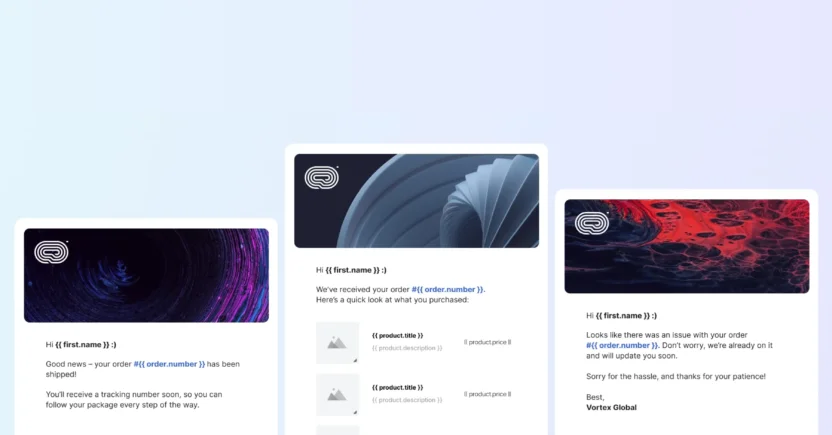
MailerSend brings accessibility into the transactional email space. With a drag-and-drop UI and collaborative features, it’s tailored to non-technical teams who want simplicity without sacrificing functionality.
The downside is, advanced users may find it lacks the customization or API potency that other platforms, like SendGrid or Mailgun, can offer.
How Pricing Works: Its free tier includes 3K emails/month, with paid plans starting at $25/month for 50K emails.
Best For: Small-to-mid-sized brands seeking simple, user-friendly email solutions.
Choosing the right transactional email platform comes down to what your team needs most, whether that’s deep web or mobile app personalization, developer APIs, or scalability for thousands of emails a month.
But if you want a platform that blends automation, reliability, and personalization seamlessly, MoEngage is king (applause).
Automate Your Transactional Email Process with MoEngage
MoEngage’s transactional email platform can help you communicate with your customers on more channels than just email. From precise, real-time delivery to advanced personalization across over 10 channels, the platform ensures your critical customer communications aren’t just reliable, but impactful.
Want to enhance your transactional emails with more communication channels? Explore MoEngage’s email marketing solutions or schedule a 1:1 demo today to see the difference from other platforms firsthand.



